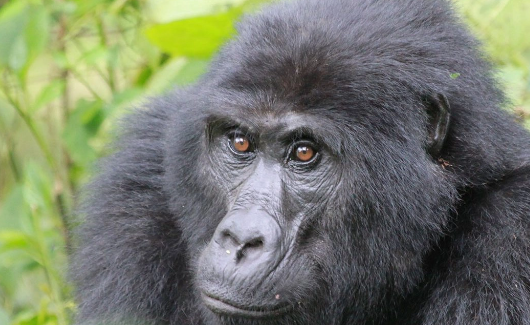Understanding how gorillas use eye contact can reveal fascinating insights into their social behaviors and communication methods. As one of our closest relatives in the animal kingdom, studying gorillas helps us learn about their emotions and interactions, which can enhance our understanding of communication across species. This article explores the significance of eye contact among gorillas, shedding light on their unique social dynamics.
The Importance of Eye Contact in Gorilla Communication
Eye contact is a powerful tool for gorillas, serving as a form of non-verbal communication that expresses emotions and intentions. When gorillas make eye contact, they can convey confidence, aggression, or submission, helping to establish their place within the social hierarchy of their group. This behavior is especially important in social settings where clear communication can help maintain peace and cohesion among members. By observing eye contact, researchers and caretakers can better understand gorilla moods and group dynamics.
Building Bonds Through Eye Contact
In addition to signaling dominance or submission, eye contact plays a crucial role in building social bonds among gorillas. Mothers and infants often engage in eye contact, establishing a strong emotional connection that is vital for the young gorilla’s development. This interaction not only enhances their bond but also helps the infant learn social cues necessary for navigating life within the group. Furthermore, adult gorillas often use eye contact during play or grooming sessions, reinforcing friendships and fostering a harmonious social atmosphere.
Cultural Differences: Eye Contact Across Gorilla Groups
Interestingly, eye contact habits can vary among different gorilla populations and individuals. Some groups may exhibit more direct eye contact, while others may be more reserved. These differences can be influenced by factors such as habitat, individual personality, and group dynamics. Understanding these variations can provide deeper insights into gorilla behavior and well-being. For example, researchers can tailor their approaches to care and conservation based on observed eye contact patterns, ultimately benefiting the gorilla community.
In conclusion, the way gorillas use eye contact is vital for their social interactions and emotional connections. By examining these behaviors, we can gain valuable insights into their lives and enhance our understanding of non-verbal communication in the animal kingdom. If you’re intrigued by gorilla behavior and want to learn more, consider exploring more about their fascinating social structures or visiting a local zoo or sanctuary where you can observe them in action.

